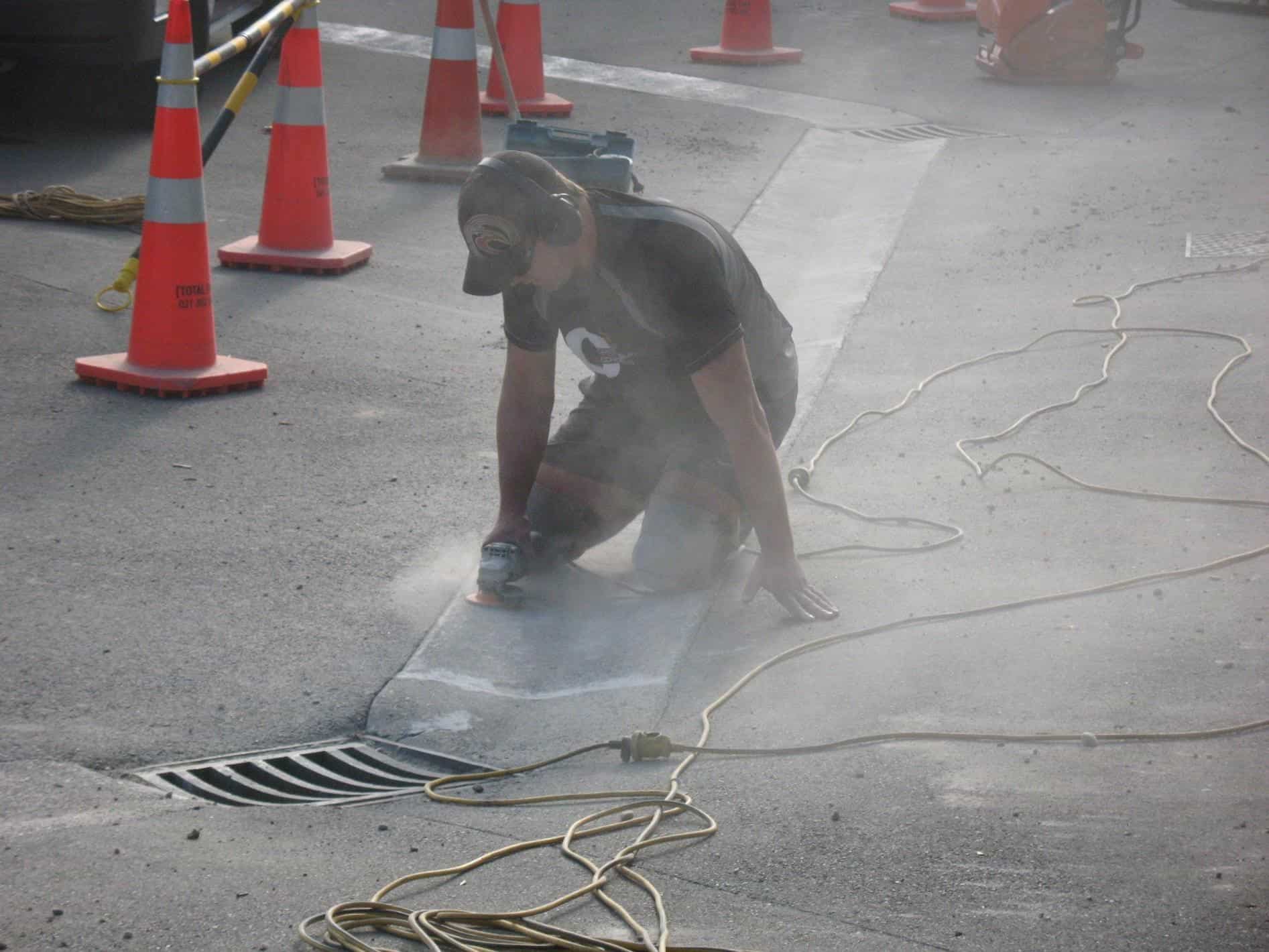Crystalline Silica from Concrete Dust
Silica and Concrete Dust
Concrete dust contains crystalline silica, which is often referred to as silica. Technically, they are different, but for simplicity, it will only be referred to as silica in this blog post. If you want to understand the difference, please see our web page on silica testing.

The area outside our office was recently resurfaced. The photo above shows one of the contractors doing the work. It represents a culture in the construction industry.
The Problem with Silica Dust
Once it enters your lungs, your body does not have a mechanism to remove it. It is so hard and strong that the body can not dissolve it. The finer particles can get into the bloodstream.
It is a chronic hazard – it takes time for the effects to manifest themselves. An acute hazard, such a cut on your hand, can be recognised straight away. Without this feedback, in the form of pain and a visible wound, people have the perception that “everything will be okay”.
Hidden Hazard
The risk from silica is on a par with asbestos. With increased knowledge and awareness, a lot of people react immediately to the possible exposure to asbestos. With respect to silica, the culture and customs are different and people will, without reservation, inhale silica. It is not commonly perceived to be a hazard – this lack of consideration of the risks involved is illustrated in the above photo and demonstrated throughout New Zealand every day.
New Zealand Culture – Silica Dust
K2 Environmental recently conducted a large amount of silica dust testing, focused on the Canterbury rebuild. The lessons learnt apply across all of New Zealand.
Here are some of our findings:
Specialists Working with Concrete
The professionals – concrete-cutting and polishing firms were aware of the risk and had systems in place to protect against silica dust exposure.
Builders and Contractors
- Builders and other contractors would do “small” jobs themselves. These typically took up to four hours. They would not employ a professional due to the cost and time
- They were unaware or did not care about silica exposure – it was not perceived as a health risk
- Exposures in this group were among the greatest
- Even when told of the hazards, it did not alter their perception
- Masks, if worn, were not fit tested (even if a free test was offered)
- They would not risk exposure to noise or asbestos
What to Do?
Be aware that silica is a risk to your health and the health of your team
- If you are grinding, polishing, cutting, or carrying out any activity with concrete that can create dust, you are likely to be creating a hazard for many others
- The most toxic part of the concrete dust is the fine dust particles
- These dust particles can remain airborne for months
- These particles can travel long distances
Stop creating clouds of dust
- Use extraction – use tools that collect the dust as it is generated
- Prevent dust becoming airborne – water is effective in controlling and suppressing dust
- Air exchange – if working inside, ensure that there is good air exchange
Protect yourself
- Use breathing protection – anyone in the area needs to use a mask
- Ensure that you have a fit factor of over 200 – get your mask fit tested
- A P2 mask similar to the picture is required
- Wash your dusty clothes – don’t shake them
- Wet and dusty clothes need to be washed
- Talk to others about the risk of silica dust exposure
Know what your exposure is
- Get an assessment of the risk – contact K2 Environmental
- Measure the effectiveness of silica dust controls – this can be done by silica dust testing